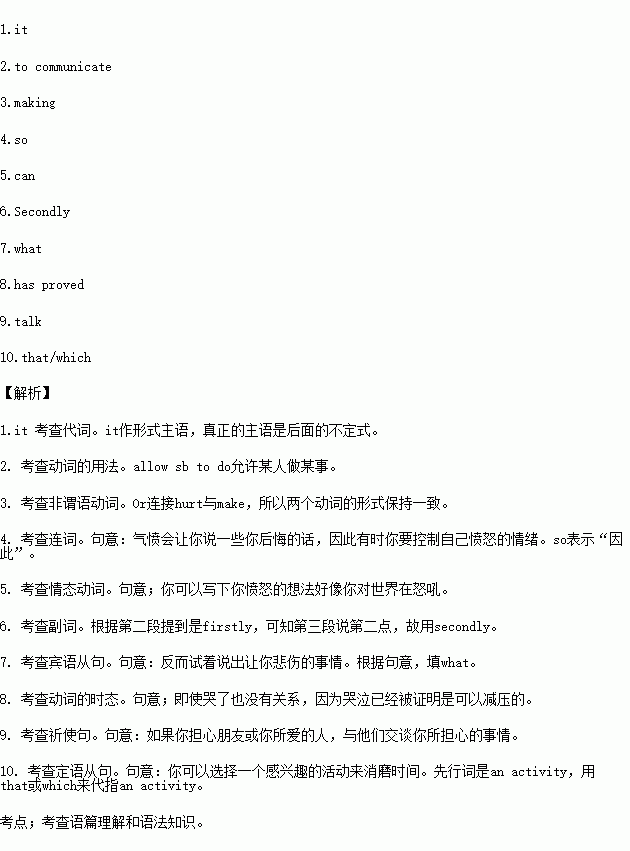题目内容
Sometimes our emotions can seem to defeat us. When this happens, _ 1.__ is possible to give people the wrong impression or do something we regret. Learning to express your emotions effectively will allow you ____2.__ (communicate) clearly and carefully, without hurting those around you or __3.___ (make) the situation worse. So it’s important to learn to express emotions.
Firstly, you need to learn how to express your angry feelings. Anger can cause you to say things you regret, _4.__ sometimes you should control your angry feelings. If you’re afraid of saying something that hurts someone, then try to think carefully before you speak. Also, you __5.__ write down your angry thoughts as if you were shouting it out to the world. This allows you to express your anger.
__6.___, it’s necessary to learn to express sadness. Sadness is particularly hard to deal with, especially when people can see you are sad. But you needn’t hide it. Instead, try talking about __7.___ is making you sad. It doesn’t matter if you cry, as it _8.___ (prove) that crying can reduce stress. What’s more, if you feel your secrets are safe in your dairy, then write down what is upsetting you.
Learning to express worry is also important. If you’re worried about a friend or a loved one, 9. (talk) to them about your worry. This could give you some peace of mind. Also, you can choose an activity 10. you are interested in and spend some time doing it. The less you think about the problem, the less you will worry.

